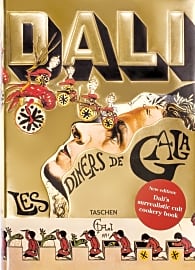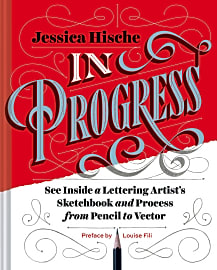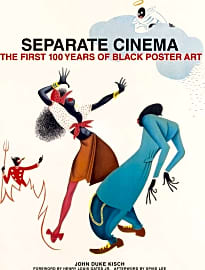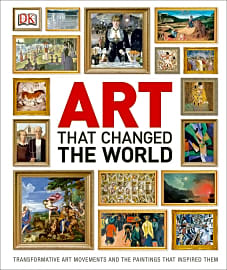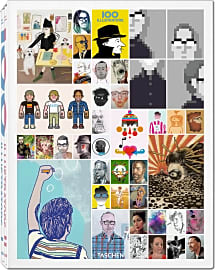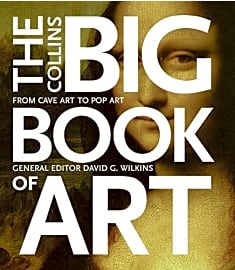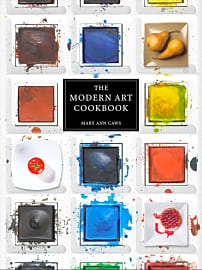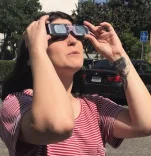The 10 Best Art Books

This wiki has been updated 38 times since it was first published in August of 2015. This eclectic selection of art books has something for everyone, from the serious academic to the casual appreciator of less-formal works. We've included a few uncommon choices that will appeal to a wide range of personalities, including compositions inspired by food and cinema. Any of these might be the perfect gift you seek for that hard-to-please friend or relative. When users buy our independently chosen editorial picks, we may earn commissions to help fund the Wiki.
Editor's Notes
March 27, 2020:
Art is highly subjective, so no list will fully please everyone, but we did our best to source diverse, thought-provoking, beautifully rendered volumes to satisfy a range of interests.
Movie lovers will appreciate Separate Cinema, for example, while Dali: Les Diners de Gala should whet the appetite of any surrealism addict. When revisiting our selections, we realized the ratio of niche offerings vs. comprehensive and wide-spanning ones was a bit off balance and so we said goodbye to The Electric Pencil and brought on Artists: Their Lives and Works and The Metropolitan Museum of Art: Masterpiece Paintings, two choices suitable for both the casual and serious art scholar, as well as students and even young children.
And while Art: A World History has plenty of engrossing information, its small size, images, and type make it ill-suited to its main purpose as an art book, which is to be visually stimulating and appealing. We thought it prudent to remove it, and took the opportunity to champion an underrepresented creative field by adding In Progress in its place.
Our priorities when weighing the merits of each book included high-quality image reproduction, diverse representation, interesting and colorful contextual information, immaculate presentation and arrangement, and varied perspectives to get the reader thinking. We avoided volumes that are overly snobbish and filled with jargon. Any one of the books on this list should give ample historical information but works best when paired with supplementary art history literature.
Finding Fine Art Between the Pages
That is why reading an art book will usually offer more long-term value than reading about a single work or an artist's biography.
Beauty is in the eye of the beholder; thus the world has ample room for Rothko, Rembrandt, Rafael, and beyond. With billions of human beings alive on earth, the art world has ample appreciators for works from thousands of different schools of artistic expression. And with a 30,000 year history of objects that are generally considered to be of artistic merit, from the majestic painted caves at Lascaux to the mind-bending works of Damien Hirst, there is indeed plenty of material for the interested party to study and enjoy.
Trying to grasp art as a whole is a Herculean task that could (and has) consumed entire lifetimes. Developing an understanding for a few aspects of the art world, whether one studies the painters of late 19th century Europe or the development of Hellenistic statuary, to name two major examples, is a far more palatable task. However, any piece of art, each individual artist, and any given movement also exists in the larger context of the arts, and having at least some wider knowledge of the influences that worked upon a given person, place, or school is imperative for proper appreciation. That is why reading an art book will usually offer more long-term value than reading about a single work or an artist's biography.
More often than not, the art book is distinct from the text book dedicated to the arts and/or art history in that its primary aim is as much to entertain as to educate. And that's a welcome distinction for most people with but a casual interest in the arts. The primary aim of most art books is not to provide an academic's understanding of art, but rather to help those of us with little grounding in the field gain access to the works therein discussed.
Learning about art should be a pleasure, not a chore, in other words. Many art books use humor or attitude to keep the reader engaged, and there is nothing wrong with embracing a book that takes a casual tone when dealing with its subject matter. Think also of an art book not necessarily as an authoritative work, but more often than not as a jumping-off point for further studies if you so find your level of interest merits such. You may not find all the information you want about any topic concerning any aspects of art in one book, but you may well find a new area of interest that will bring you untold pleasure in the years to come.
The Art Book As An Educational Tool
A proper arts education takes many years of dedicated, patient scholarship to achieve. It involves schooling, extensive reading, and, ideally, global travel.
A fine appreciation for art, however, requires only genuine interest and the occasional dedication of time. And even when you can't fly off to Paris for a weekend filled with museums or stop off in Washington to behold the plethora of buildings wrought in fine Neoclassical style, a great deal can be gained from digesting the material found in great art books.
And to realize how truly fluid a piece of solid bronze can be, one must walk circles around Rodin's twisting, oft tormented sculptures.
The plain fact is that pieces of art seen on the pages of a book can never do real justice to the original work. The majesty and sheer scale of the Sistine Chapel's ceiling and walls must be gazed up at from below to be truly appreciated; one must stand before a canvas slashed with Pollock's paints to grasp the power of abstraction. And to realize how truly fluid a piece of solid bronze can be, one must walk circles around Rodin's twisting, oft tormented sculptures.
While seeing paintings or pictures of statues on the pages of a book is far better than never seeing a visual representation of a work of art at all, it inevitably falls short of experiencing the piece in person. Thus it is that anyone interested in acquiring deeper and fuller appreciation for and knowledge of art must choose an art book not only for the images of the works therein included, but also for the quality of the text that supports them.
In fact, were the genuinely inspired scholar of art offered the choice between a book filled with full-page, full-color reproductions of famed paintings supported only by captions and between a book rich in writing covering the history and context of a given work, artist, or movement, she would without fail choose the latter.
Look then for art books praised for their academic prowess and excellence of syntax as much for their large, colorful pictures. The knowledge you learn about art lives with you forever; whether you stand before an original masterpiece or view it on the page, eventually you will have to walk away or close the book, no matter how lovely the painting, statue, or photograph may be.
The Art Book As An Art Object
One of the main reasons people buy art books is, of course, not really to read them at all, but rather to display them as objects to be admired for their own sake. In this context, many an art book has been referred to (and not unjustly) as a coffee table book.
The former might be ideal for the reception area of an advertising agency, while the latter might help inspire high school athletes and artists alike.
If you are looking for a book on the arts that will have generally universal appeal, such as must be well-placed in the lobby of a hotel or office building or in the waiting room of a medical practice, a broad survey-style of text will serve best. Consider some of the many fine books dealing with major and notable works of art that are arranged in chronological order. Not only do these books usually contain the well-known works most people with a casual interest in art will want to see anyway, but their time-based orientation helps to make digestion of an often complicated subject that much easier.
If you are interested in more specifically-focused artistic subject matter, you are fortunate to be living in a veritable golden era of niche art book publication. Books can easily be found covering topics as diverse as the artistic midcentury imagery of the pin-up girl to books focused on the history of sports photography. The former might be ideal for the reception area of an advertising agency, while the latter might help inspire high school athletes and artists alike.
Choosing the right art book for your environment, then, is as much of a well-reasoned, careful process as choosing the right painting for the space. When in doubt, choose a tome surveying art as something of a whole just as you would choose a print by Ansel Adams or a poster of an Impressionist painting; when you know your audience, choose an art book that will speak to them directly.



